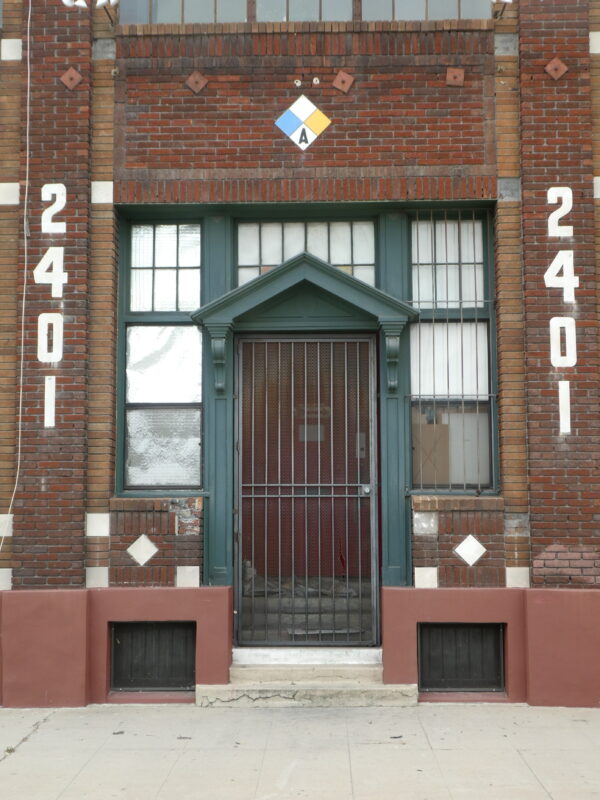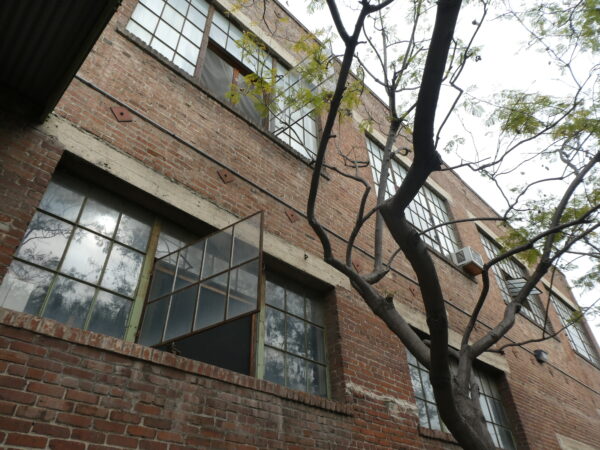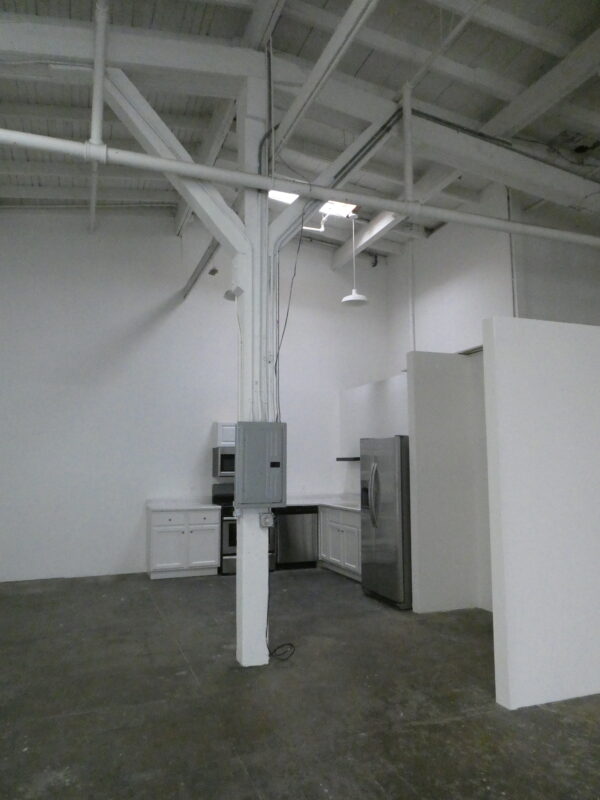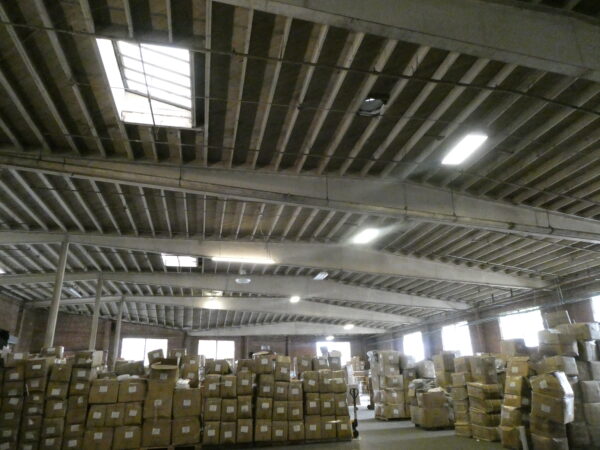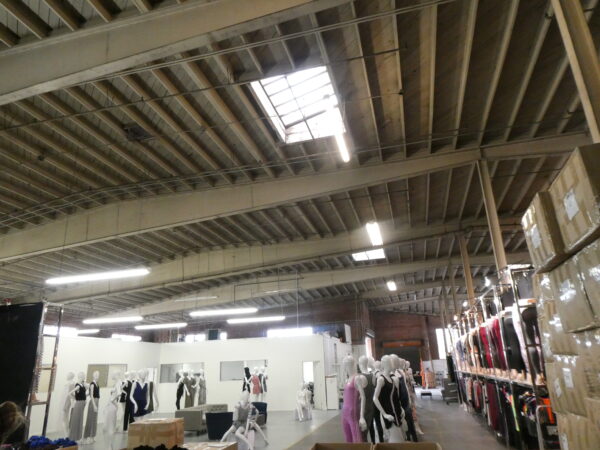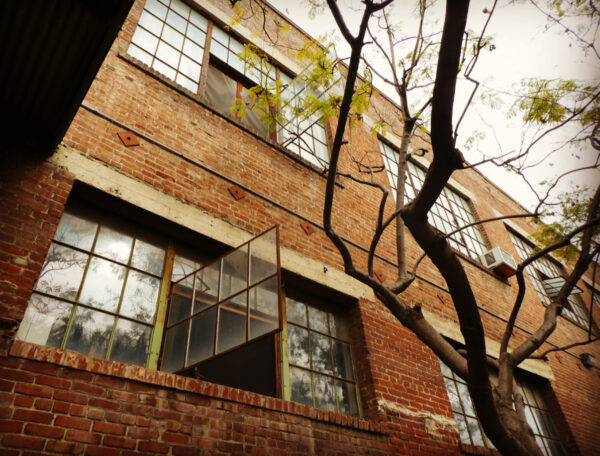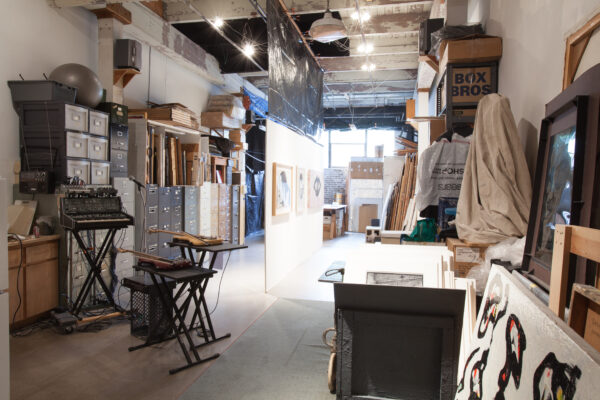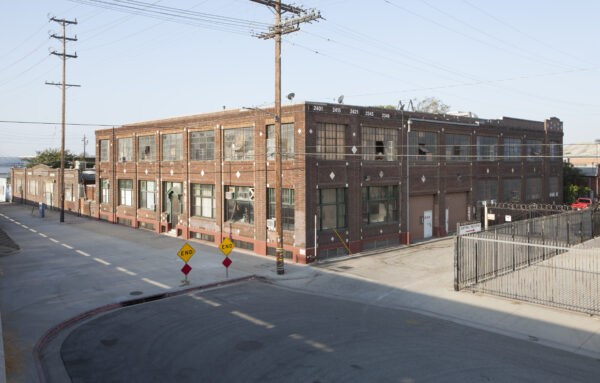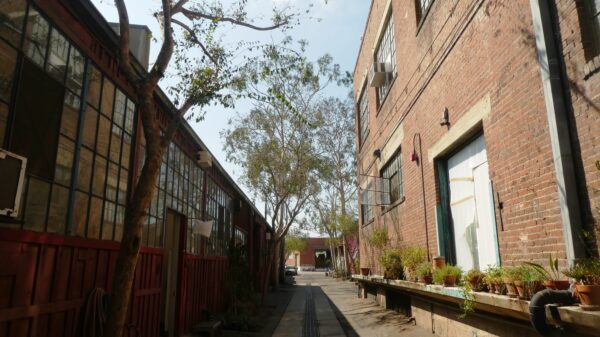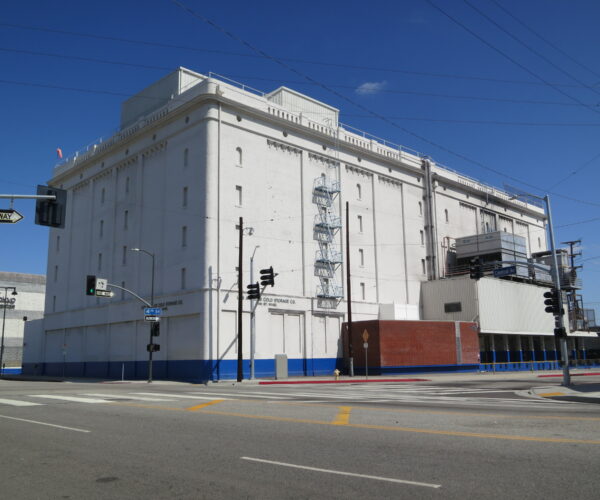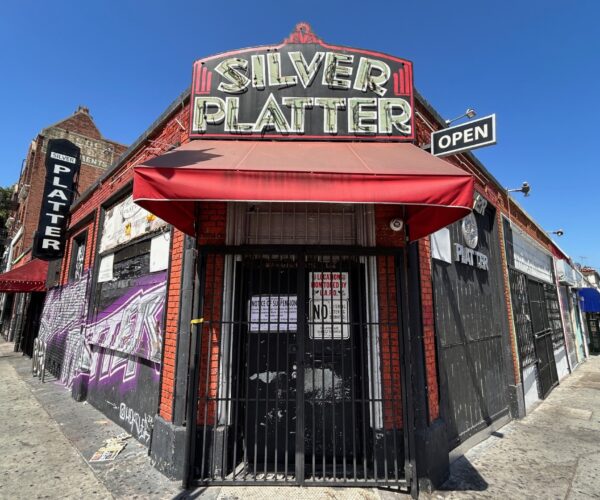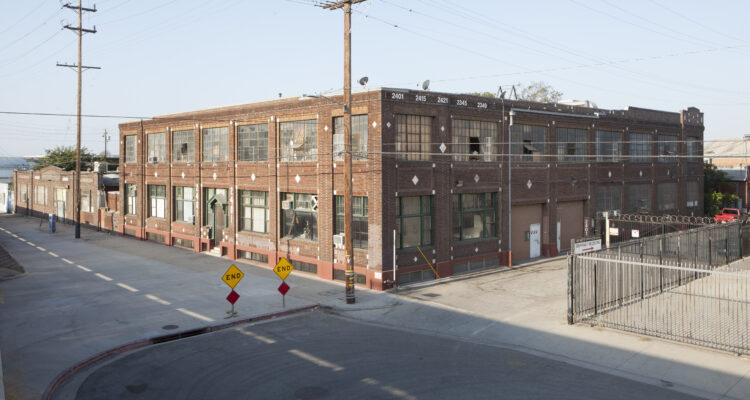
Place
Santa Fe Art Colony
Originally built to house the C.B. Van Vorst Furniture Manufacturing Company, the building has provided live/work space to artists as the Santa Fe Art Colony since 1986.
Saved
In 2020, Santa Fe Art Colony was named a Historic-Cultural Monument (HCM) for significance to the C.B. Van Vorst Furniture Manufacturing Company, architecture, and as an early form of artist housing in Los Angeles.
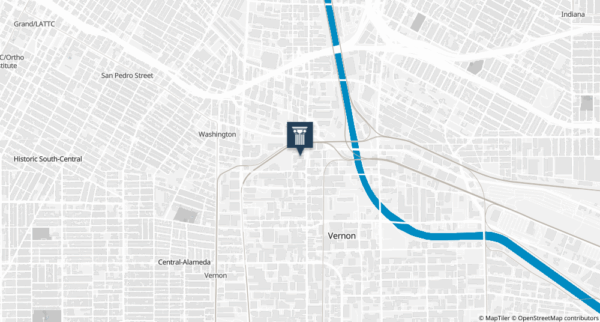
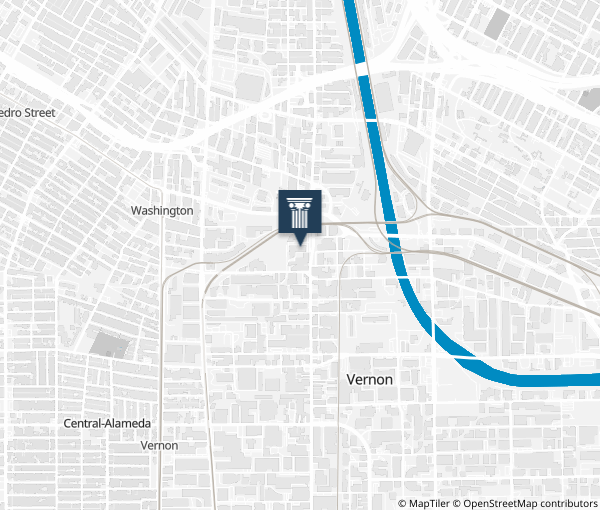
Place Details
Address
Website
Architect
Style
Property Type
Government Officials
Community
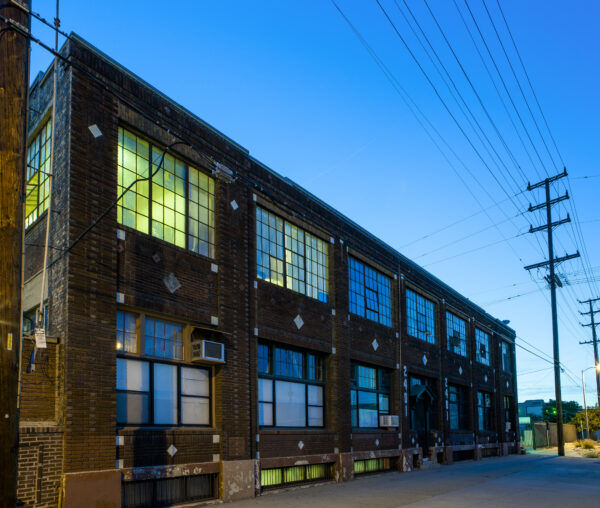
1916 building that originally housed the C.B. Van Vorst Company, now known as the Santa Fe Art Colony
Overview
This former industrial complex was constructed between 1916 and 1950 to house the C.B. Van Vorst Furniture Manufacturing Company. It served as an industrial building for over 70 years. In 1986, the building was adaptively re-used as artist housing. Santa Fe Colony, as it became known, has offered a rent-restricted live-work complex for 80 artists for the last thirty-four years.
The Conservancy nominated the building as a Historic-Cultural Monument for its connection to the C.B. Van Vorst Furniture Manufacturing Company, industrial architecture, and artist housing. It was approved by City Council in 2020.
About This Place
About This Place
Initially constructed in 1916 by the C.B. Van Vorst Company for the manufacturing of furniture and mattresses, the complex underwent additions in 1924 and 1953. It represents an important link to Los Angeles’s industrial past and the manufacturing companies located in the city’s primary industrial district.
In 1986, support from the City of Los Angeles’s Community Redevelopment Agency (CRA), Housing and Urban Development (HUD), for‐profit development group led by Marvin Zeidler, and sculptor Leonard Skuro led to the creation of the Santa Fe Art Colony. Santa Fe Art Colony acquired the former industrial building and converted the space into artist housing. It was the city’s first publicly subsidized artists’ housing.
In 2018, the Miami based Fifteen Group purchased the complex the next year implemented significant rent increases to tenants.
This former industrial plant was established by the C.B. Van Vorst Company as a furniture and mattress manufacturing company, which operated from the complex through the 1950s. From the 1950s through 1986, the company that produced Terry Tuck robes and loungewear operated out of the complex.
SurveyLA identified the property as eligible for listing in the National Register as an excellent example of an early twentieth-century manufacturing plant and daylight factory building in Los Angeles’ primary industrial district. Daylight factory buildings type are characterized by bays of large industrial sash windows, skylights, or other roof forms to maximize the amount of light reaching the interior.
The property consists of four buildings: a factory, a mill, and a storage/showroom building, all constructed in 1916, and an assembly building added in 1924. The factory building was designed by architect John M. Cooper, who specialized in industrial architecture in the Los Angeles area and also designed the Globe Mills complex.
The two-story factory building and one-story storage/showroom building, both located along Santa Fe Avenue, are vernacular in style and feature brick cladding, flat roofs with stepped parapets, and tripartite wood and industrial steel sash windows. The factory building also displays an elaborate main entrance and decorative tile on the facade.
To the rear of the factory building is the mill building, with a gabled roof with stepped parapet, board-and-batten wood siding, and industrial steel sash windows. Behind the storage/showroom building is an assembly building, with a flat roof and parapet, brick cladding, and industrial steel sash windows.
Our Position
The Conservancy nominated the Santa Fe Art Colony as a Historic-Cultural Monument to honor and preserve its many layers of history. The application promoted the building’s significance for its connection with the C.B. Van Vorst Furniture Manufacturing Company, as an excellent example of an early twentieth-century manufacturing plant and daylight factory, and its successful adaptation into affordable housing for artists.
